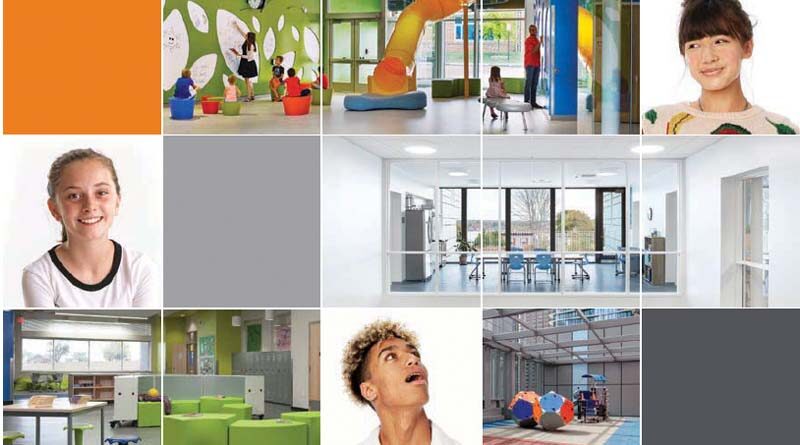Well-Being and Positive Emotions are the Basis for Long-Term Learning
By Dr. Dieter Breithecker, in collaboration with VS America (www.vsamerica.com)
Dr. Dieter Breithecker is a Health and Kinetics Scientist, and is the President of the Federal Institute on the Development of Posture and Movement in Germany.
When pedagogy, architecture, and design are aligned, the goal of meeting the physiological requirements of teachers and learners is on the path to success.
An essential starting point is considering the whole person. Each of us has complex interactions between body, mind, and emotions. These processes require needs-appropriate learning rhythms and teaching programs to inspire the curiosity and desire to discover new things. When these are met, school becomes a place of holistic well-being and positive emotions, the basis for long-term learning.
With the goal of helping students learn how to learn, responsible schools shift their focus from the standard dissemination of knowledge to leading students to individualized problem-solving strategies.
Diversity, self-organization skills, teamwork, collaboration, and project-oriented learning are integral parts of a fluid school culture. The architecture supports this ideal with specialized learning areas, quiet zones, and open learning landscapes.
Equally vital, furniture that’s agile enough to be quickly reconfigured according to the lesson plan and that supports healthy posture. And seeing the massive shift schools have had to make due to the COVID-19 pandemic underscores again the need for furniture that can be easily moved to create physically distant environments, as well as allowing stacking of tables and chairs when not in use.
Supporting students: The most important performance driver is well-being.
Study, work, and living spaces have a long-term impact on our physical, mental, and social well-being. This underscores the important role spaces and furnishing play in meeting our physiological needs.
Throughout human development, our ancestors faced spatial conditions that constantly presented them with physical, mental, emotional, and social challenges. The resulting adaptive behavior is the success story of human physiology. As a species, we would not have survived by sitting still.
Children in particular, whose physical and mental development processes are not yet complete, require more regular movement stimuli than adults. That’s how we can also explain the everyday image of a student tipping their chair back to balance it on two legs – their unconscious is ordering them to move in order to prevent emotional, mental, and physical disorganization.
Successful learning engages the body, mind, and soul. There is a strong connection between humans’ perception of environment (sensory stimulation), emotional reactions, and well-being – which is the most important driving force of performance. Let’s create learning spaces that embody dynamic flexibility, healthy ergonomics, and compassion.
Emotional relief
Since emotions are the main driver of human productivity, let’s find ways to keep them in balance. Creating learning spaces where students and teachers truly want to be is the ultimate goal. A place where students happily learn and teachers teach with enthusiasm.
Environmental change creates behavioral change.
Quiet nooks and corners
In addition to areas that foster movement, the classroom should also have nooks and corners that children can seek out themselves when they need quiet time.
Students are constantly switching between being tense and relaxing throughout the school day. To thrive in these opposing states of being, students need appropriate spaces in equal measure. Spaces or zones that invite students to relax and recharge should not only have appropriate furnishings, but also the right lighting and colors in order to create a sense of well-being. It makes sense to locate quiet zones along lesser-used corridors so as to actively promote relaxation. A table facing the wall or located behind a mobile partition and quiet corners also provide the right working atmosphere for easily distracted children. In contrast, the area in the middle of the classroom offers more active space to move around.
Library
Due to school days becoming increasingly longer, students need openly accessible spaces that give them the opportunity to research independently, to read and to work. Here, too, the room’s design and furniture should offer different options for individual learning and working, including standing workstations, various seating options, good visuals and acoustics, and the appropriate media equipment.
Learn more about agile furniture that is built to support student and teacher well-being at www.vsamerica.com. For more of Dr. Breithecker’s research, contact VS America at info@vsamerica.com.
Dr. Dieter Breithecker is a Health and Kinetics Scientist, and is the President of the Federal Institute on the Development of Posture and Movement in Germany. As an international expert he has presented all over Europe, Asia, Indonesia, North and South America, Australia, and Arabia.
This article is designated as Branded Content and School Construction News does not ensure the veracity or accuracy of the information included within.

